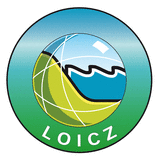Mekong Delta - Transported Goods on Waterways
The Mekong River constitutes an important trade route for both, the national markets and the import and export of goods. Due to continually rising production and trade volumes in the local agriculture, aquaculture and industries, transport logistics are increasingly needed. At present, the Mekong Delta comprises 25.000 km of rivers and canals which are daily used by 500.000 ships (> 1 DWT = dead weight tonnage), of which 66 % belong to cargo and 33 % to passenger shipment. The traffic volume itself wouldn’t be a problem, but it’s very difficult to control and manage the waterways: In Vietnam alone, more than 40 % of vessels are unregistered and only 27 % of the piers have a license (MONRE 2009).
The here presented data show a growing importance of waterways in the Mekong Delta Provinces and Ho Chi Minh City (HCMC) during the past decade: In 2003, the total amount of transported goods on Mekong Delta waterways was at 26.711.000 tons. Moreover, the spatial distribution clearly indicates a concentration of waterway transportation in the northeastern part of the Delta, including Ho Chi Minh City. Ho Chi Minh City and Long An Province alone accounted for 45 % of the total quantity of transported goods during the same year. In 2006, however, the picture has slightly changed: An Giang, one of the Northern provinces of the Mekong Delta, more than tripled its annual ship freight from 3.492.000 to 12.791.000 tons within three years, only. This impressive growth rate (over 360 % percent), is most probably linked to the drastic expansion of industrial fish farming and fish processing companies (see map “Mekong Delta Provinces - Fish Farming Output, 2004 and 2007”). Moreover the constantly growing rice production in the upper delta also may play a certain role, but usually rice is transported from farmers to rice mills by barks and then further by road to HCMC.
Altogether the quantity of transported goods by waterways in the Mekong Delta increased between 2003 and 2006 by 67 % or 44.620.400 tons per year whereas Ho Chi Minh City had a respective growth rate of 17 %, which is equivalent to 14.921.400 tons per year.
Future investments in the existing waterways are planned to improve the infrastructure linkages between Ho Chi Minh City and the Mekong Delta on the one hand, and the export zones of the Delta with the sea, on the other hand. At present, Dinh An River, which connects Can Tho and other ports along the Hau River with the East Sea, can only accommodate vessels of less than 5.000 DWT (MONRE 20089). Although those investments will cost hundreds of millions of US $, they will still not meet the real demand of the rapidly growing and changing region (MONRE 2008).
References
Monre (2008): New canal to be dug to link Mekong Delta with East Sea. (01.12.2008)
Monre (2009): Mekong Delta waterway projects need investment (19.01.2009)




